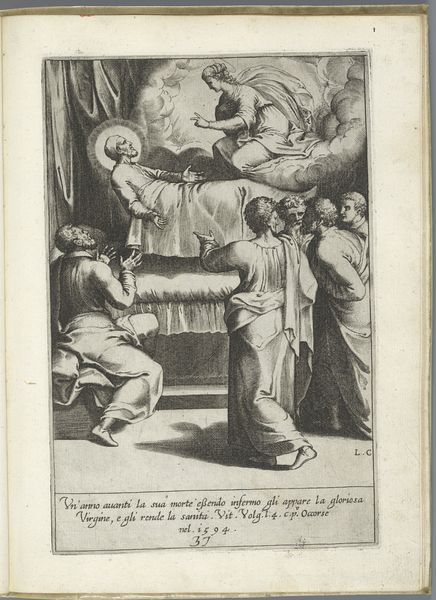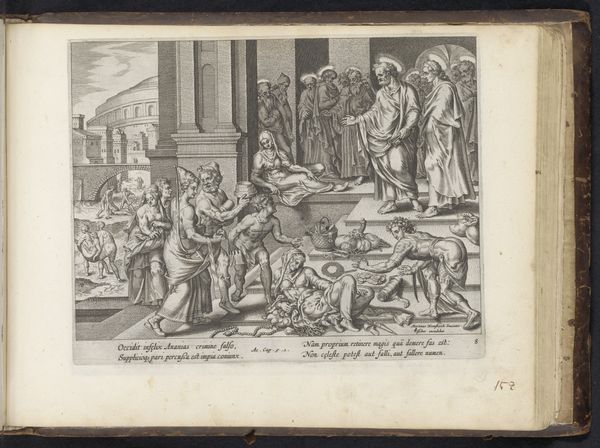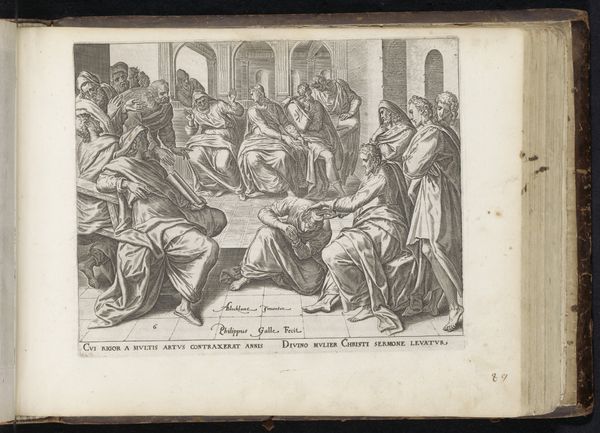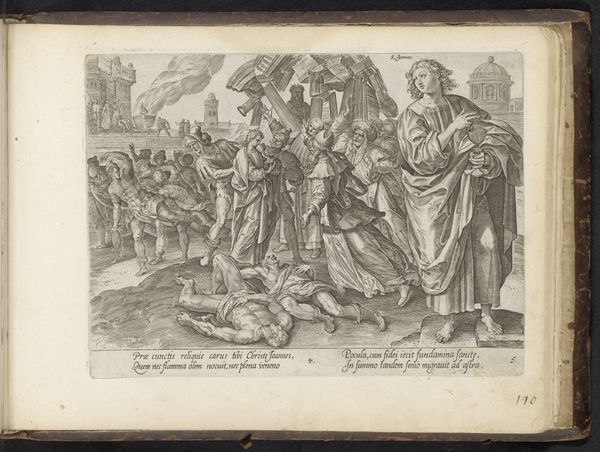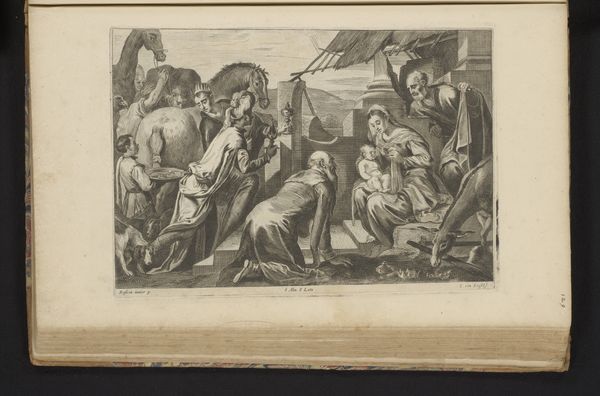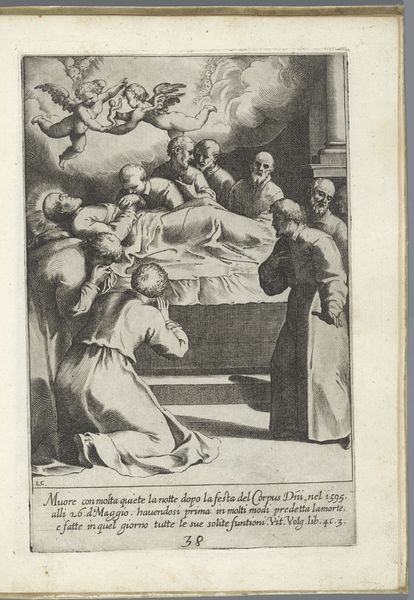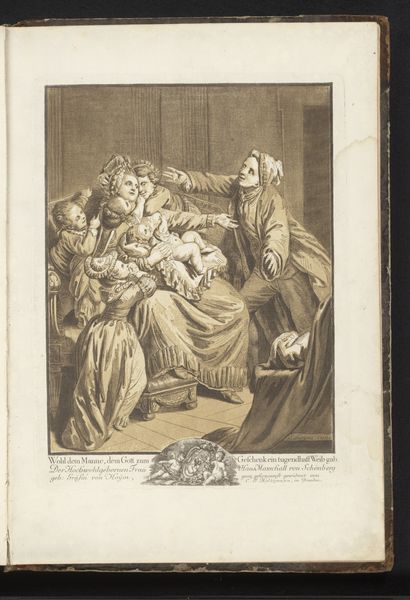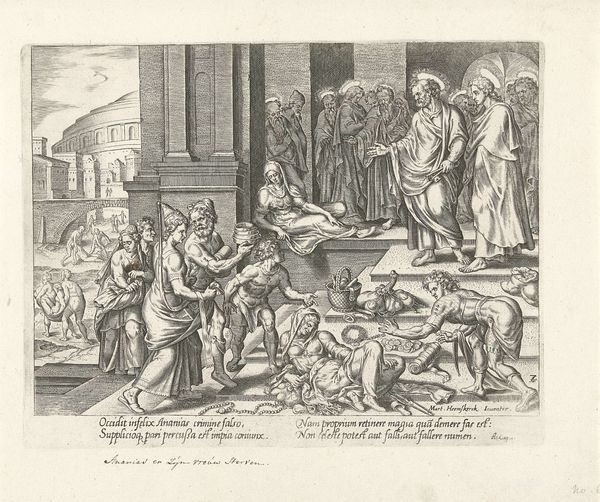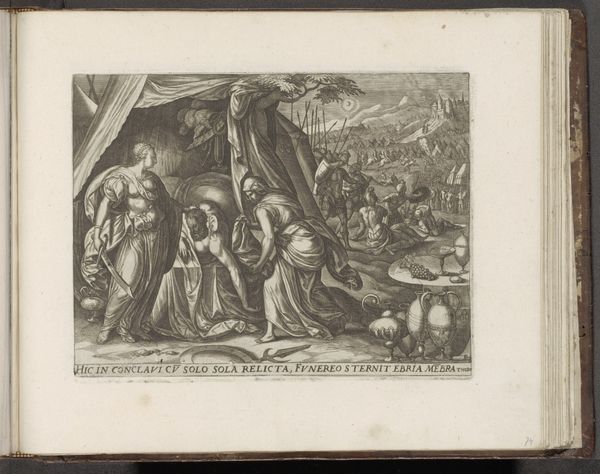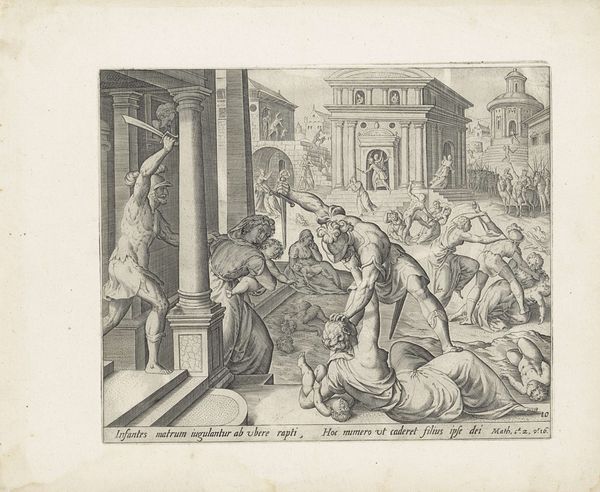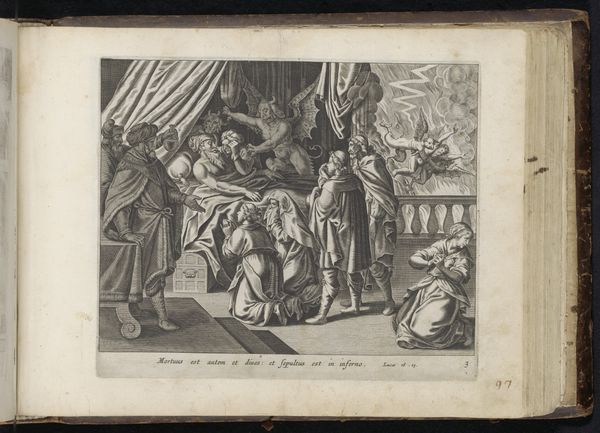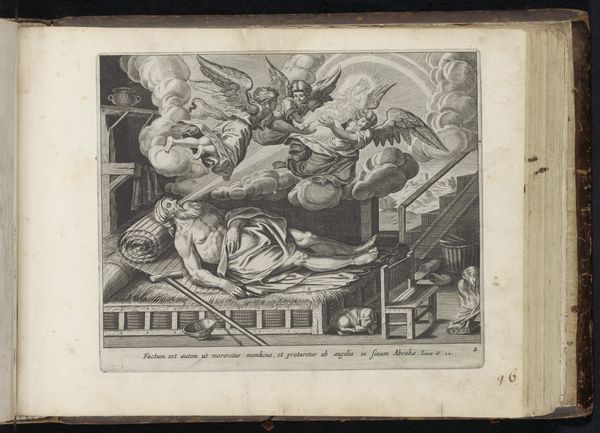
print, engraving
# print
#
mannerism
#
history-painting
#
engraving
Dimensions: height 189 mm, width 138 mm
Copyright: Rijks Museum: Open Domain
Editor: Here we have "Transfiguratie" by Jan (II) Collaert, created sometime between 1570 and 1646. It's an engraving. There's a definite hierarchy visually, with figures above and figures below. How do you interpret this work, particularly in relation to its historical context? Curator: This piece, "Transfiguratie", isn't just a representation of a biblical event. It's a product of its time, steeped in the social and political anxieties of the late 16th and early 17th centuries. Notice the style - mannerism, which often uses distortion and exaggeration. What statement do you think the artist is making with it? Editor: That's a great point! The figures *are* somewhat elongated and their poses feel theatrical. So, the distortion, in this case, can be viewed as an expression of tension and uncertainty of the historical climate at the time, as the artist explores it. Curator: Exactly! Consider the Reformation. Religious upheaval profoundly impacted European society. This image would have been viewed and interpreted through very different lenses depending on the viewer's affiliation and social standing. Those kneeling figures, overwhelmed by the divine presence—is that submission, fear, awe? Is the artist reinforcing power structures? Editor: It definitely gives me a lot to think about! The idea that even religious art is interwoven with the politics and social dynamics of the time it was created is eye-opening. Curator: Precisely! Art serves as a potent cultural mirror, reflecting and refracting the complexities of our world. Next time you encounter an artwork, consider not just what is depicted, but also *why* it is depicted that way. It tells us about the people who made it and the people for whom it was made. Editor: Absolutely, understanding those layers adds so much depth. Thanks for pointing that out! Curator: My pleasure! Every artwork invites a dialogue, a critical exploration of power, identity, and the human condition.
Comments
No comments
Be the first to comment and join the conversation on the ultimate creative platform.
